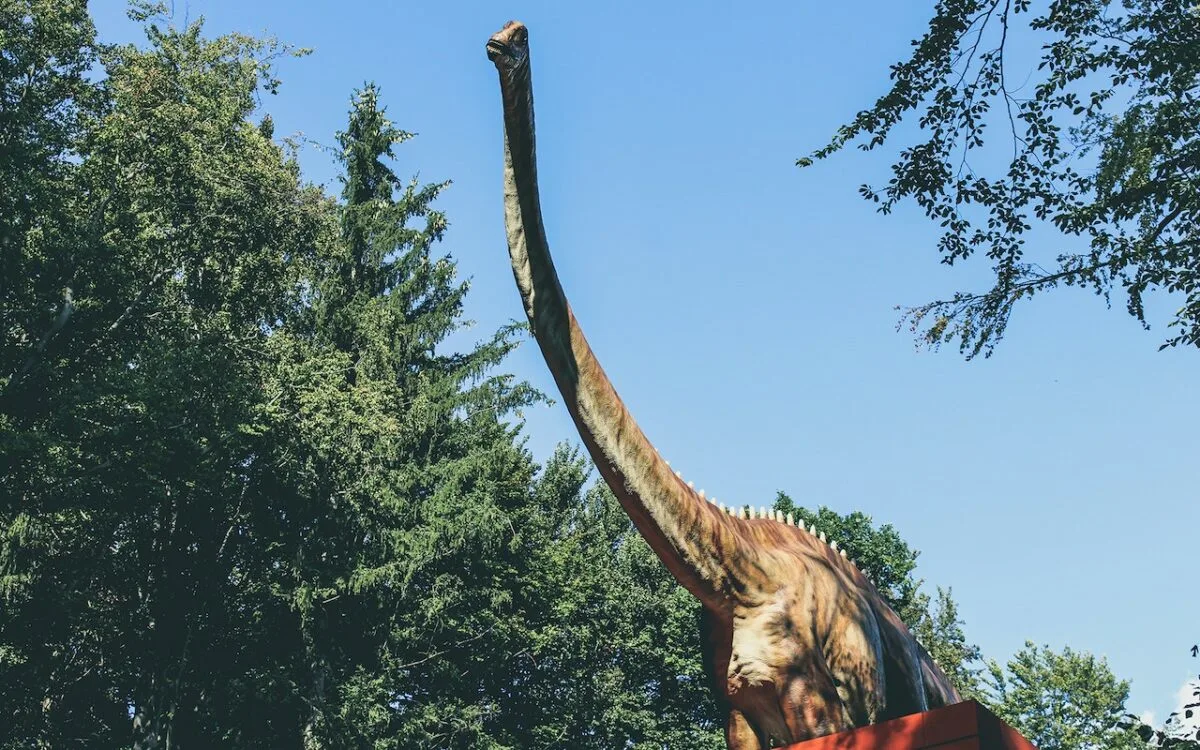Welcome to long-neck dinosaurs. Everything you need to know about these magnificent dinosaurs. I personally love them for their calm nature and beautiful aesthetics.
The world of dinosaurs is full of wonder and awe-inspiring creatures that dominated the earth millions of years ago. Among them, the long-neck dinosaurs, also known as sauropods, are one of the most fascinating species.
These gentle giants’ elongated necks and tails are an enigma, evoking a sense of wonder and amazement among people of all ages.
Read the entire article or jump to any section.
What are the Characteristics of Long Neck Dinosaurs?
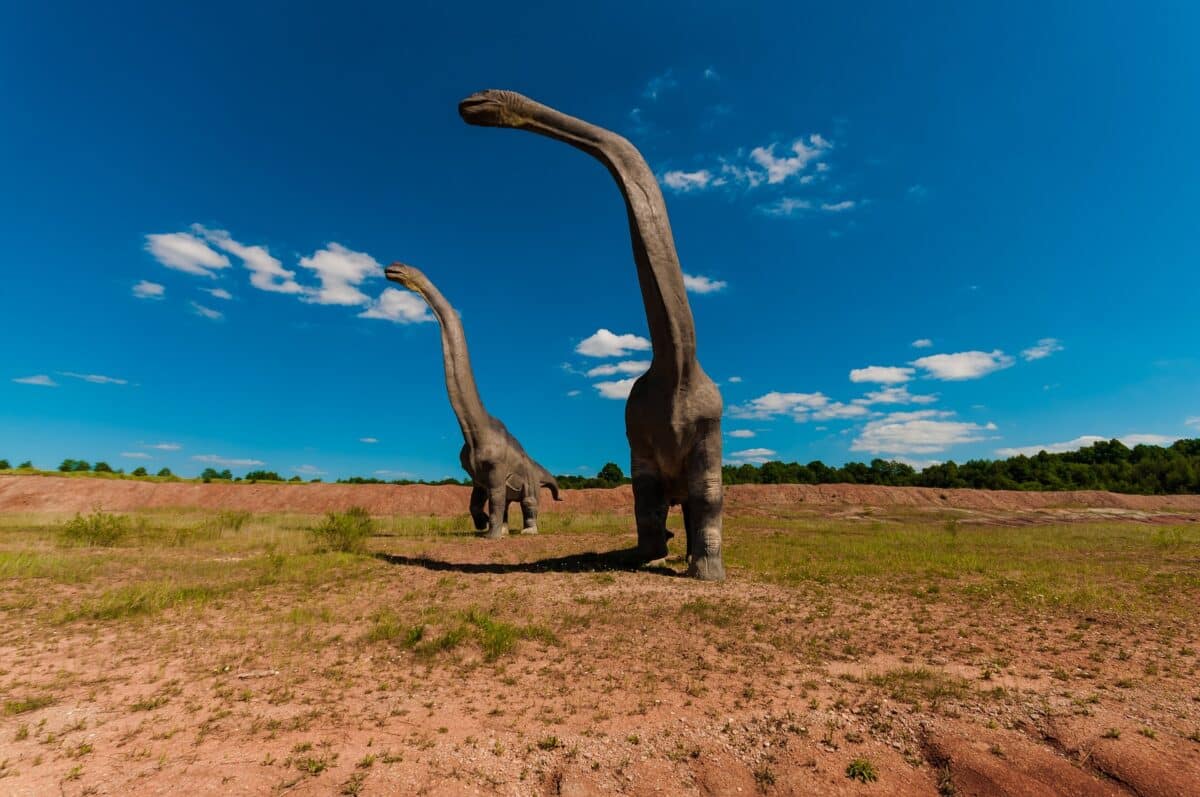
Long neck dinosaurs, also known as sauropods, were some of the most giant creatures ever to roam the earth. Their most distinguishing feature was, of course, their incredibly long necks. But there’s more to these gentle giants than just their necks.
In this article, we’ll dive into the unique and fascinating characteristics of long-neck dinosaurs.
#1 Size
Long neck dinosaurs were some of the largest animals ever to walk the earth. Some species grew to 100 feet in length and weighed as much as 100 tons, and that’s heavier than a Boeing 737! These massive creatures needed a lot of food to survive, so they spent most of their time eating plants.
#2 Long Necks
The most recognizable feature of long-neck dinosaurs is, of course, their long necks. Some species had channels that were over 50 feet long! These necks comprised up to 19 vertebrae, and the bones were hollow to reduce their weight.
The necks were so long that they could reach the tops of trees and eat vegetation that other animals couldn’t get.
#3 Teeth
Long neck dinosaurs had tiny peg-like teeth that were not well-suited for chewing. Instead, they used their teeth to strip leaves from branches. The plants were then swallowed whole and ground up in their stomachs with the help of rocks that they ate.
#4 Tail
Long neck dinosaurs had long tails often used as a whip to fend off predators. The seats could also be used for balance, allowing the massive animals to navigate rough terrain without falling over.
#5 Walk
Despite their massive size, long-neck dinosaurs were surprisingly nimble on their feet. Their unique walking gait allowed them to move quickly over long distances. Their legs were thick and sturdy, and their feet were padded to cushion the impact of each step.
#6 Intelligence
While we can’t know, researchers believe that long-neck dinosaurs were intelligent animals. They had large brains relative to their body size, and some species had complex social structures.
They may have communicated with each other through low-frequency sounds that could travel over long distances.
#7 Skin
Long neck dinosaurs had thick, scaly skin that protected from predators and the elements. Some species had bony plates embedded in their skin for added security.
Their massive size, long necks, unique walking gait, and complex social structures have captivated people for generations.
It’s incredible to think that these creatures once roamed the earth millions of years ago, and their fossils continue to provide us with new insights into the world that existed before us.
So, let’s continue to marvel at the wonders of long-neck dinosaurs and appreciate the vast diversity of life on our planet.
Behavioral Traits of Long Neck Dinosaurs
Hold on to your hats, folks! We’re about to explore the mysterious and captivating world of long-neck dinosaurs, and sauropods.
These gentle giants roamed the earth millions of years ago, leaving traces of their fascinating and complex behavioral traits. Are you ready to delve into the secrets of these massive creatures?
Buckle up, and let’s take a journey into the mesmerizing world of the behavioral traits of long-neck dinosaurs.
#1 Defense Mechanisms
Although long-neck dinosaurs were generally peaceful creatures, they were not entirely defenseless. They had a few tricks up their sleeves or in their tails.
Long-neck dinosaurs could use their long, muscular tails to whip predators, such as the fearsome Allosaurus and other carnivorous dinosaurs.
This powerful maneuver would inflict severe damage and send the predators running for cover. Additionally, long-neck dinosaurs could stomp their feet on the ground to create vibrations that signal potential danger to other herd members. Talk about teamwork!
#2 Social Behavior
Long neck dinosaurs were social creatures that traveled in herds. This social behavior provided a plethora of benefits, and it helped protect their young from predators, provided a larger area foraging, and facilitated breeding.
These gentle giants were known to mate for life and would often return to the same breeding ground year after year. They also had complex social structures, with some species having hierarchical dominance within their herds.
#3 Communication
Despite their massive size, long-neck dinosaurs could communicate with each other in various ways. Researchers speculate that these creatures expressed through low-frequency sounds that could travel long distances.
Long-neck dinosaurs may have used these sounds to signal danger or to communicate with their herd members.
#4 Foraging
As herbivores, long-neck dinosaurs spent most of their time foraging for food. Their long necks allowed them to reach high branches that other animals couldn’t access, providing them with a steady supply of vegetation.
Interestingly, some species of long-neck dinosaurs may have had different feeding strategies. For example, some species may have preferred to graze on lower vegetation, while others may have chosen to browse on higher vegetation.
Famous Long Neck Dinosaurs Discoveries
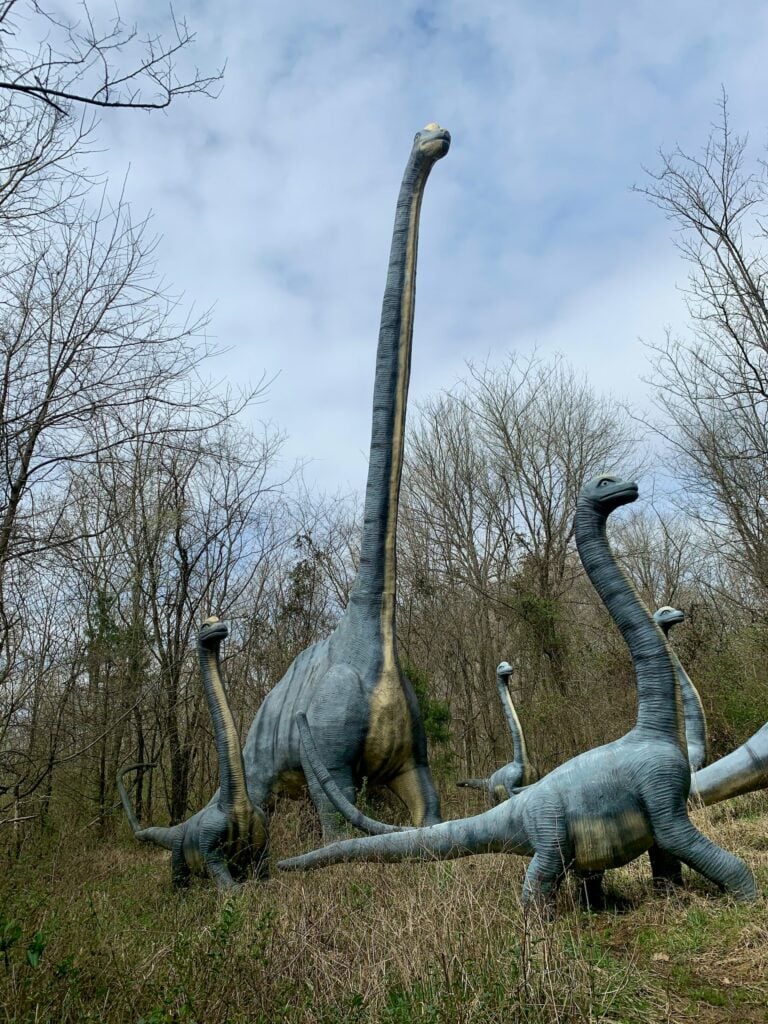
Long neck dinosaurs have captivated the imaginations of scientists and the public alike for centuries. Over the years, many famous discoveries have shed light on these fascinating creatures and their place in the history of life on Earth.
Let’s take a closer look at some of the most significant finds:
Diplodocus
In 1877, the famous fossil hunter Othniel Charles Marsh discovered the first remains of Diplodocus in Colorado. The discovery of this long-neckinosaur caused a sensation in the scientific community and sparked a public interest in dinosaurs that continues to this day.
Brachiosaurus
Paleontologist Elmer Riggs discovered the first Brachiosaurus fossils in Colorado in 1900. These long-neck dinosaurs were some of the most giant creatures ever to walk the Earth, and their discovery generated significant excitement among scientists and the public alike.
Argentinosaurus
Discovered in Argentina in 1989, Argentinosaurus is one of the most enormous dinosaurs ever discovered, with estimated lengths of up to 100 feet. This lolong-neckinosaur is so massive that scientists believe it may have been too heavy to support its weight on land.
Apatosaurus
Formerly known as Brontosaurus, Apatosaurus is another well-known long-neck dinosaur that has captured the public’s imagination. The first fossils of Apatosaurus were discovered in Colorado in the late 1800s, and the species has since become one of the most recognizable dinosaurs in popular culture.
Sauroposeidon
Discovered in Oklahoma in 1994, Sauroposeidon is one of the tallest long-neck dinosaurs ever discovered, with estimated heights of up to 60 feet.
This massive creature is named after the Greek god Poseidon, and its discovery has helped scientists better understand the evolution of these fascinating creatures.
Each of these discoveries has contributed to our understanding of long neck dinosaurs and their place in the history of life on Earth.
From the massive size of Argentinosaurus to the unique shape of Brachiosaurus, each species offers a glimpse into the incredible diversity of life that existed during the age of dinosaurs.
Who knows what other amazing discoveries await us in the future?
Also have a look at: Top 10 Dangerous Prehistoric Animals.
How many types of long-neck dinosaurs are there?
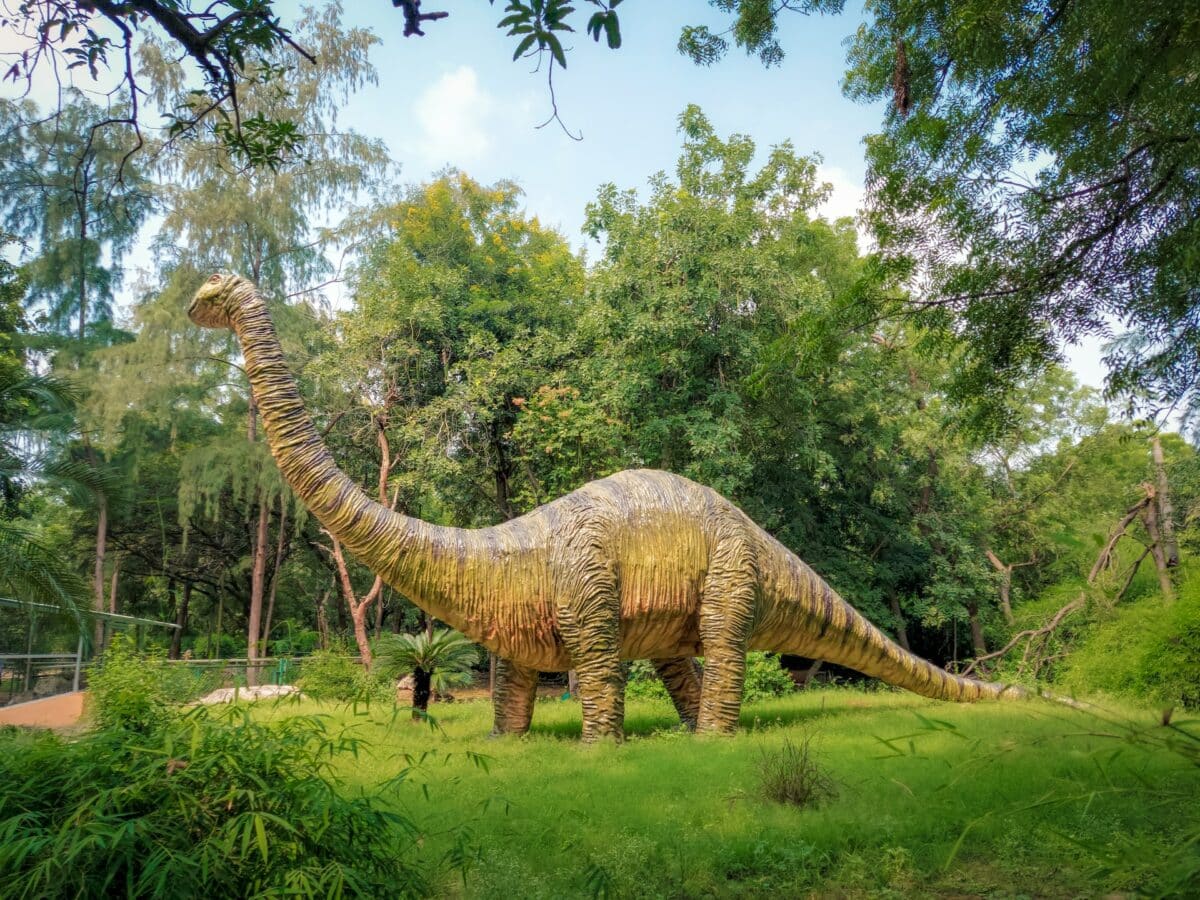
They are also known as sauropods, were some of the most giant creatures ever walking the earth.
These prehistoric beasts were divided into categories based on their physical characteristics, with some of the most notable catypeseing sauropods, titanosaurs, and diplodocids.
#1 Sauropods
Sauropods were the largest group, and they were known for their long necks, small heads, and massive bodies. Some of the most famous sauropods include Apatosaurus, Brachiosaurus, and Diplodocus.
These creatures had complex respiratory systems that allowed them to extract as much oxygen as possible from the air, enabling them to support their massive bodies.
Fun fact: They had an incredibly long lifespan. Some species, such as the Diplodocus, could live up to 100 years! This longevity was likely due to their slow metabolism and low activity levels.
#2 Titanosaurs
Titanosaurs were another group known for their massive size. They were some of the last surviving dinosaurs before the mass extinction event that wiped them out.
These creatures had unique physical characteristics, such as elongated necks and tails, that set them apart from other types.
Some of the most famous titanosaur species include Argentinosaurus, Dreadnoughtus, and Saltasaurus.
Fun fact: titanosaurs were likely able to swim. Fossil evidence has shown that some species had specialized vertebrae that allowed them to float, indicating that they may have spent some time in the water.
#3 Diplodocids
Diplodocids were long-neck dinosaurs characterized by their whip-like tails, long necks, and narrow skulls. These creatures were known for their high-speed movement, making them one of the fastest long-neck dinosaurs.
Diplodocids include species such as Diplodocus and Apatosaurus.
Fun fact: Diplodocids had an incredibly long tongue. Fossil evidence has shown that their language could measure up to 26 feet long in some species, allowing them to grab vegetation from high trees without moving their massive bodies.
#4 Mamenchisaurids
Mamenchisaurids were another group of long-neck dinosaurs known for their incredibly long necks. Some species had channels that measured up to 50 feet in length! Interestingly, mamenchisaurids also had unique teeth adapted for stripping leaves from branches rather than grinding them up like other herbivorous dinosaurs.
Fun fact: Mamenchisaurids likely had a specialized respiratory system that allowed them to take in more air with each breath. This respiratory system, combined with their long necks, may have helped them to regulate their body temperature in different environments.
Here are a few more types of long neck dinosaurs:
#5 Brachiosaurids
They were known for their long front legs, which were taller than their hind legs, giving them a distinctively sloping back. Brachiosaurids were some of the most enormous dinosaurs toever to livewith some species reaching up to 80 feet in length!
#6 Euhelopodids
These long-neck dinosaurs had long, flexible necks and were known for their ability to stand on their hind legs, similar to modern-day kangaroos. Euhelopodids were among the first sauropods to evolve, appearing in the Jurassic period over 170 million years ago.
#7 Omeisaurids
Omeisaurids were long neck dinosaurs that lived in what is now China during the Jurassic and Cretaceous periods. These creatures were known for their long, narrow skulls and relatively short necks compared to other sauropods.
#8 Rebbachisaurids
These long-neckinosaurs had shorter necks than other sauropods, ut were known for their uniquely shaped vertebrae. Rebbachisaurids also had unusual teeth shaped like spoons, allowing them to scoop up vegetation more easily.
#9 Shunosaurids
Shunosaurids were long neck dinosaurs that lived in China during the Jurassic period. These creatures had elongated necks and were known for their unique teeth, serrated on the front and back, allowing them to strip leaves from branches efficiently.
Each type of long-neck dinosaur had unique physical and behavioral characteristics, making them fascinating creatures to study and learn about.
While some of these species are less well-known than others, each contributes to our understanding of the incredible diversity of life that existed during the age of dinosaurs.
Long Neck Dinosaurs in Popular Culture
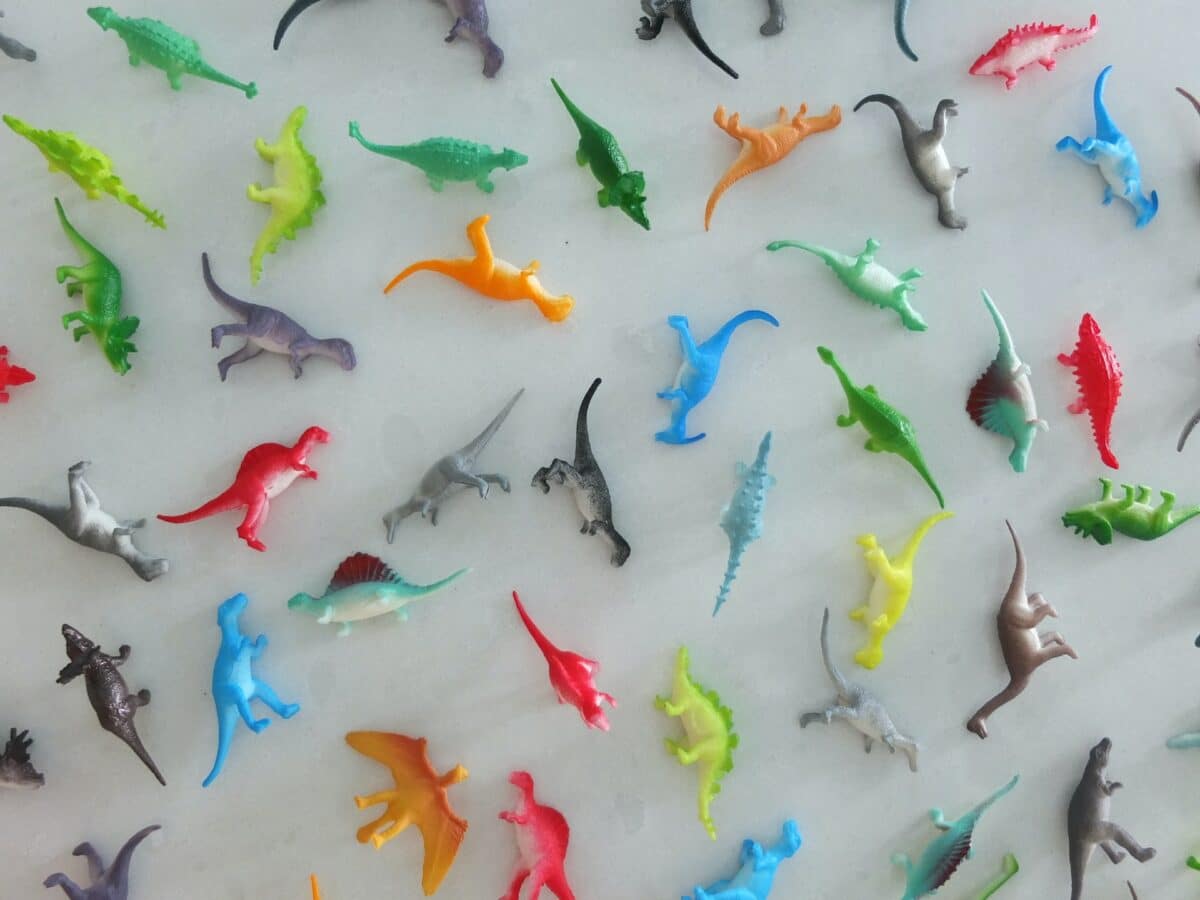
Long neck dinosaurs, also known as sauropods, have captured the imagination of people worldwide, inspiring everything from blockbuster movies to children’s books and toys.
Let’s look at how these gentle giants have made their mark on popular culture.
Movies and TV shows
Long neck dinosaurs have played a prominent role in several blockbuster movies and popular TV shows.
One of the most iconic scenes in the original Jurassic Park movie features a long-neck Brachiosaurus reaching up to nibble on a tree. At the same time, the Apatosaurus is the star of a touching scene in the sequel, The Lost World: Jurassic Park.
In the Walking with Dinosaurs TV series, viewers get a realistic glimpse of what it might have been like to encounter these creatures in their natural habitat.
And let’s not forget Disney’s Dinosaur, which tells the story of a young Iguanodon befriending a group of long-neck dinosaurs as they make their way through a dangerous landscape.
Children’s books
Long neck dinosaurs have captured children’s heartsor generations, and countless books feature these gentle giants.
How Do Dinosaurs Eat Their Food? is a playful look at young dinosaur sometimes messy eating habits while Dinosaur Roar! is a colorful book that helps children learn about opposites.
The classic children’s book The Brontosaurus and the Ninnies is also centered around a long neck dinosaur and features charming illustrations that bring these creatures to life.
Toys and collectibles
FrTherere countless ways to bring long-neck dinosaurs into your home. , from plush toys and action figures to detailed models and sculptures
Young children can cuddle up with a soft and snuggly long-neck plush toy. At the same time, older kids and adults might appreciate a detailed model that accurately recreates the anatomy of these prehistoric creatures.
Collectors can even find rare and one-of-a-kind pieces, like limited-edition statues and fossils preserved for millions of years.
Long neck dinosaurs have captured our imaginations in countless ways, inspiring us to learn more about these fascinating creatures and bringing a sense of wonder and excitement to our lives.
Whether watching them on the big screen or snuggling up with a plush toy, these gentle giants continue to be a beloved part of popular culture for people of all ages.
Long Neck Dinosaurs and their Habitat
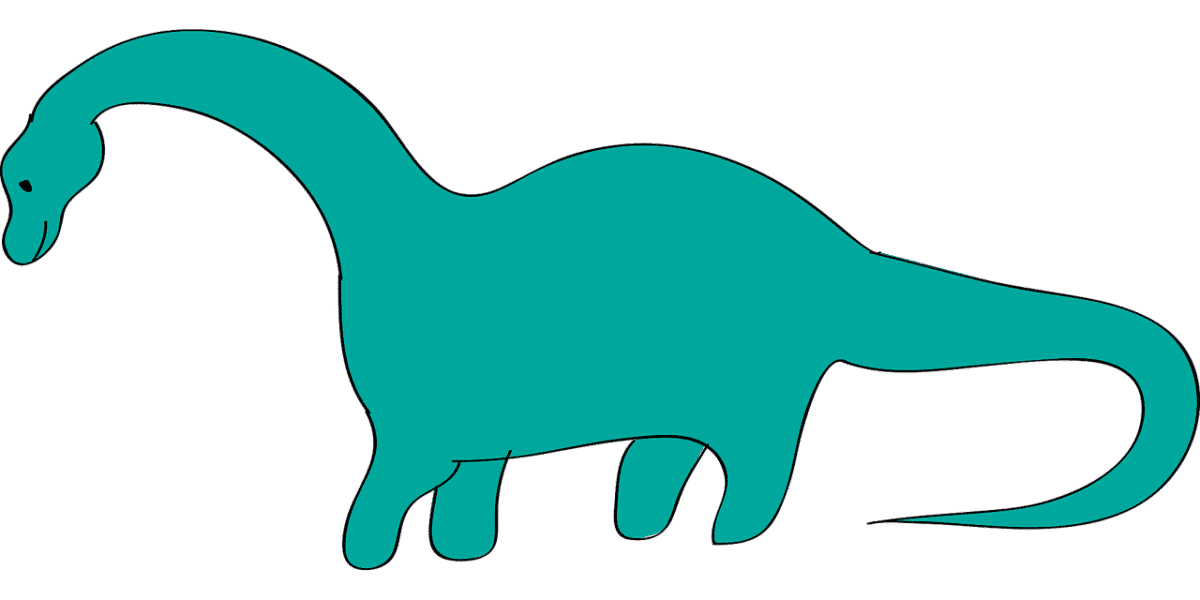
Long neck dinosaurs (also known as sauropods) lived during the Mesozoic Era, which is often called the Age of Dinosaurs. This era spanned from about 252 to 66 million years ago. During this time, the Earth’s climate was much warmer and more humid than today’s.
The continents were also arranged differently, with many grouped in a supercontinent called Pangaea.
Let’s touch on the habitats of long-neck dinosaurs and their interactions with the world around them.
- Paleoenvironment
Long neck dinosaurs lived in various environments, from the forests of what is now North America to the deserts of what is now Africa.
They could be found in both freshwater and terrestrial ecosystems. They lived when the Earth’s continents were much closer together and the climate was much warmer than it is today.
Some of the most common habitats for long neck dinosaurs included:
- Forests: Many long-neck dinosaurs lived in dense forests where they could find ample food and shelter.
- Swamps: Some long-neck dinosaurs lived in swampy areas where they could find aquatic plants to eat.
- Plains: Other long-neck dinosaurs lived in open grasslands where they could move freely and forage for food.
Long neck dinosaurs inhabited various environments, from forested lowlands to semi-arid plains. Some famous long-neck dinosaur habitats include the Morrison Formation in North America, the Lourinhã Formation in Portugal, and the Tendaguru Formation in Tanzania.
Food Sources: What Do Long Neck Dinosaurs Eat?
Long-neck dinosaurs were herbivorous, which means they only ate plants. Their long necks allowed them to reach high branches and leave that other dinosaur could not, giving them access to a wide range of food sources.
Some of the plants that long neck dinosaurs ate included:
- Ferns: Many long-neck dinosaurs ate ferns, abundant during the Mesozoic Era.
- Conifers: Long-neck dinosaurs also ate conifers, which are cone-bearing trees that are still found today.
- Cycads: Another common food source for long-neck dinosaurs were cycads, which are palm-like plants that are now rare.
Recent studies suggest that long-neck dinosaurs may have migrated vast distances to take advantage of seasonal changes in vegetation. This would have required a highly developed sense of spatial awareness and the ability to navigate unfamiliar terrain.
Interaction with other species
Long neck dinosaurs coexisted with other prehistoric creatures, including other dinosaurs, pterosaurs, and early mammals. Some long-neck dinosaurs were preyed upon by large carnivorous theropod dinosaurs, such as Allosaurus and Tyrannosaurus rex.
Long neck dinosaurs also engaged in complex social behavior, traveling in herds and engaging in courtship displays.
Some species are even known to have cared for their young after hatching, a rare behavior among reptiles.
Some of the other animals that long neck dinosaurs may have interacted with include:
- Theropods: These carnivorous dinosaurs may have preyed on long-neck dinosaurs.
- Stegosaurs: These were herbivorous dinosaurs that also lived during the Mesozoic Era.
- Pterosaurs: These were flying reptiles that lived alongside dinosaurs and may have interacted with long-neck dinosaurs in various ways.
Conclusion on long-neck dinosaurs
These dinosaurs were more than just massive creatures; they were an essential part of the ecosystem.
They played a vital role in the paleoenvironment, shaping the landscape through their movement and feeding habits. Their interactions with other species, including predators, helped maintain the prehistoric world’s delicate balance.
Despite their extinction, they have left an indelible mark on the world. Their fossils and bones serve as a reminder of the wonders of the ancient world and continue to be studied by scientists to this day.
Whether you are a paleontology enthusiast or just a lover of dinosaurs, there is no denying the enchanting appeal of these prehistoric giants.
Thank you for reading about the long-neck dinosaurs. If you want to read more about dinosaurs we have multiple articles like Jurassic World Dominion Dinosaurs or 14 Prehistoric Animals You Should Definitely Know About.
Join our Forum for free today!

- These are The 5 Largest Great White Sharks Ever Recorded - July 19, 2024
- The Surprising Benefits of Big Game Hunting - July 18, 2024
- $100k+ Hunting Experiences The Most Expensive Animals to Pursue - July 17, 2024

